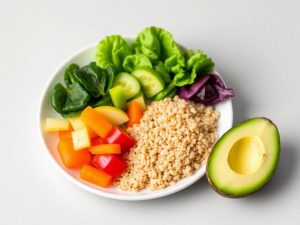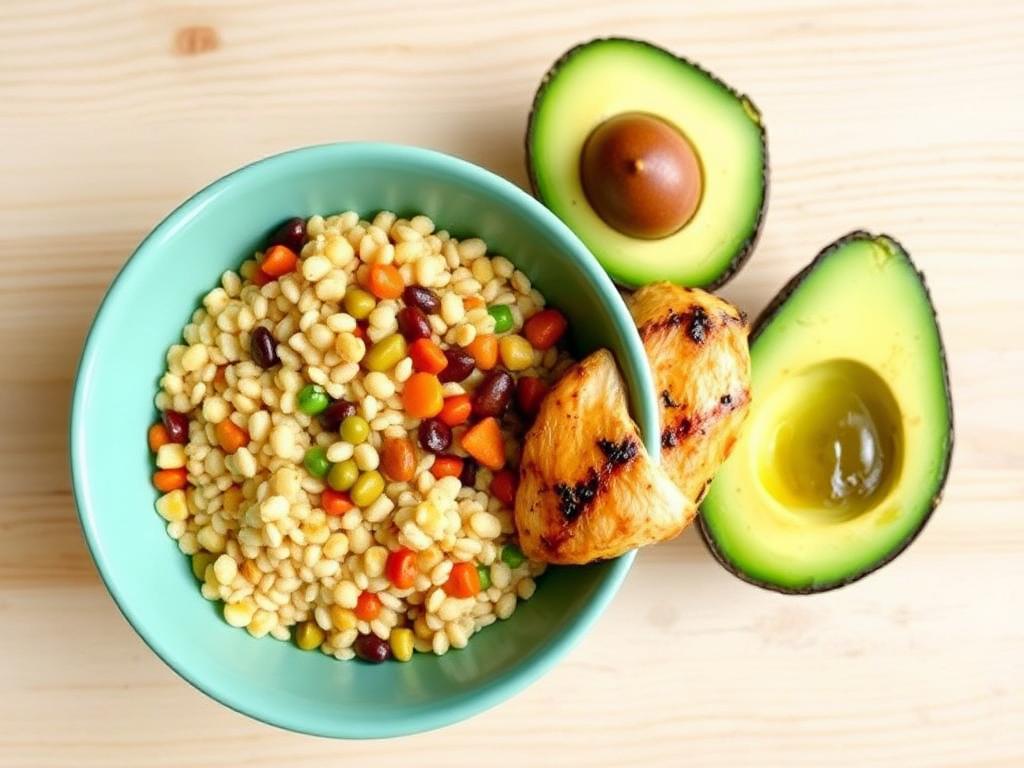Understanding Portion Control for Weight Management

When it comes to weight management, portion control plays a crucial role. While exercise and healthy eating are vital components of maintaining a healthy weight, understanding portion control can help you regulate the amount of food you consume, ensuring that you’re not overeating and making better choices. Portion control is all about striking the right balance between the food you eat and your body’s nutritional needs.
In this article, we will break down the concept of portion control, why it’s important, and share tips to help you practice it effectively for long-term weight management.
What is Portion Control?
Portion control is the practice of managing the amount of food you consume at each meal. It doesn’t just focus on reducing calories, but rather on serving sizes that align with your body’s energy needs. It’s about listening to your body’s signals of hunger and fullness, as well as learning how much of different foods you need for proper nourishment.
Many people struggle with portion sizes, especially in today’s world where large servings are common in restaurants, packaged foods, and takeout. Understanding the difference between a serving size and a portion size can help avoid overeating and promote a balanced diet.
Why is Portion Control Important for Weight Management?
- Prevents Overeating: Many of us tend to eat larger portions than we realize, which can lead to consuming more calories than our body needs. Portion control helps regulate the intake of calories, making it easier to maintain or lose weight.
- Promotes Healthy Eating Habits: Practicing portion control encourages you to be mindful of what you’re eating, helping you make healthier choices. By learning what constitutes a proper serving size, you can make sure you’re eating a balanced diet.
- Balances Nutrients: Portion control allows you to allocate your daily intake of macronutrients (proteins, carbs, and fats) more effectively, helping you maintain a healthy nutritional balance throughout the day.
- Reduces Emotional Eating: Sometimes, we eat not because we’re hungry, but due to stress or boredom. Portion control can help you become more aware of your hunger cues and emotions, helping you avoid overeating during stressful times.
- Better Digestion: Eating appropriate portion sizes means your stomach isn’t overwhelmed by excessive amounts of food. This can lead to better digestion and absorption of nutrients.
Tips for Practicing Portion Control
- Use Smaller Plates and Bowls Research shows that the larger the plate, the more you tend to eat. By using smaller dishes, you can trick your brain into thinking you’re eating a bigger meal, even though the portion size is smaller. This simple strategy can help you reduce your calorie intake without feeling deprived.
- Measure Your Food While it might sound tedious at first, measuring food can help you understand what a proper serving size looks like. Use measuring cups or a food scale to get used to what a standard portion is, especially for high-calorie foods like nuts, cheese, and oils.
- Check Serving Sizes on Labels Packaged foods often contain more than one serving per package. Always check the serving size listed on the nutrition label to avoid consuming extra calories unintentionally. It’s also helpful to read the label to understand the nutritional value of what you’re eating.
- Eat Mindfully Take time to savor each bite. Eating slowly allows your brain to recognize feelings of fullness before you overeat. Avoid distractions, such as watching TV or scrolling on your phone while eating, so you can fully enjoy your meal and listen to your body’s hunger cues.
- Pre-Portion Snacks Instead of eating directly from a bag or container, portion out your snacks into smaller servings. This can prevent you from mindlessly eating too much. Use small containers or zip-lock bags to store the right amount of snacks to stay on track.
- Use the “Plate Method” A simple method to control portions is the plate method. Fill half of your plate with vegetables, one-quarter with lean proteins (chicken, fish, tofu, etc.), and the remaining quarter with whole grains or starches (brown rice, quinoa, potatoes). This ensures you’re getting a balanced meal with the right portions of all food groups.
- Control Liquid Calories Drinks like sugary sodas, juices, and alcohol can add a significant number of calories to your day. Practice portion control with liquids by limiting sugary drinks and alcohol, and opting for water, herbal teas, or sparkling water instead.
- Plan Your Meals Meal prepping can help you stay on track with portion control. When you plan your meals in advance, you can prepare the right portion sizes and avoid the temptation of eating larger portions when you’re hungry or rushed.
Portion Control and Healthy Eating Patterns
Portion control doesn’t mean you have to starve yourself or give up your favorite foods. It’s about making healthier food choices and knowing how much to eat to maintain a healthy weight. Here are some examples of healthy eating patterns that incorporate portion control:
- The Mediterranean Diet: This diet emphasizes vegetables, fruits, whole grains, nuts, and lean protein. Portion control is key, as it encourages balanced servings of healthy fats like olive oil and fish while limiting red meat consumption.
- The DASH Diet (Dietary Approaches to Stop Hypertension): This diet focuses on portion control and includes foods rich in potassium, calcium, and magnesium, which can help manage blood pressure and promote overall health.
- Plant-Based Eating: A plant-based diet encourages portions of fruits, vegetables, legumes, and whole grains. Portion control can help you avoid overeating carbs and ensure you get a balanced intake of protein and other nutrients.
How to Recognize Hunger vs. Fullness
- Hunger: Real hunger is a gradual sensation. It often starts as a slight growling or emptiness in your stomach. It’s important to eat when you feel truly hungry, not when you’re bored, stressed, or emotional.
- Fullness: Fullness signals that you’ve had enough food. It typically happens after eating, and you should feel satisfied, not stuffed. Listen to your body and stop eating when you reach this point, even if there’s food left on your plate.
Conclusion
Portion control is an effective and practical way to manage your weight while still enjoying your meals. By understanding what constitutes a healthy serving size, practicing mindful eating, and making small adjustments in your daily routine, you can improve your eating habits and maintain a balanced diet. Remember that it’s not about restricting yourself, but about being aware of what you’re eating and how much. Small, consistent changes to your portion sizes can lead to long-term weight management success.


